This is a Capstone project of five METALS students collaborating with BloomBoard. The team is working to design a video coaching experience for K-12 teachers and their instructional coaches, one that will enhance professional development by facilitating teacher-coach interaction. Our wish is to help teachers and coaches take full advantage of technology to solve problems and achieve goals together.
I am working as the Team Research Lead.
Team Members: Ya Gao, Justin Kahn, Ariel Norling, Naixin Zhang
Duration: Jan 2015 - Aug 2015
Research Methodology: Literature Review, Interviews, Competitive Analysis, Survey, Affinity Diagramming, Story Boarding, Personas, Prototype Testing
“Explore teacher professional and personal learning dynamics so that we can build a supportive video coaching experience in which teachers can seek feedback, receive guidance, and demonstrate substantive growth towards personally meaningful goals. ”
*Due to a non-disclosure agreement with our client, only some selected highlights are presented here. If you are interested in more about my experience, please feel free to contact me now!
Exploratory Research
We started the project by investigating the current status of teacher-coach interaction: How is coaching going? How does it contribute to teachers' professional development? How is technology involved?
To find the answers, we tried to explore in two directions - top down and bottom up - at the same time. We did literature review for social theories behind video communication, and face-to-face/remote interviews for stories of teachers and coaches. As we dig into protocols of the interviews to identify pain points, we went back to literature review. Such process helped us to see the psychological/social mechanism behind the emerging themes and potential directions to solve the problem. In addition, we did competitive analysis in professional development, remote coaching and video products. This helped us to see how problems were solved, and what we could create based on existing solutions.
Explorative research process (Jan 2015 - Apr 2015)
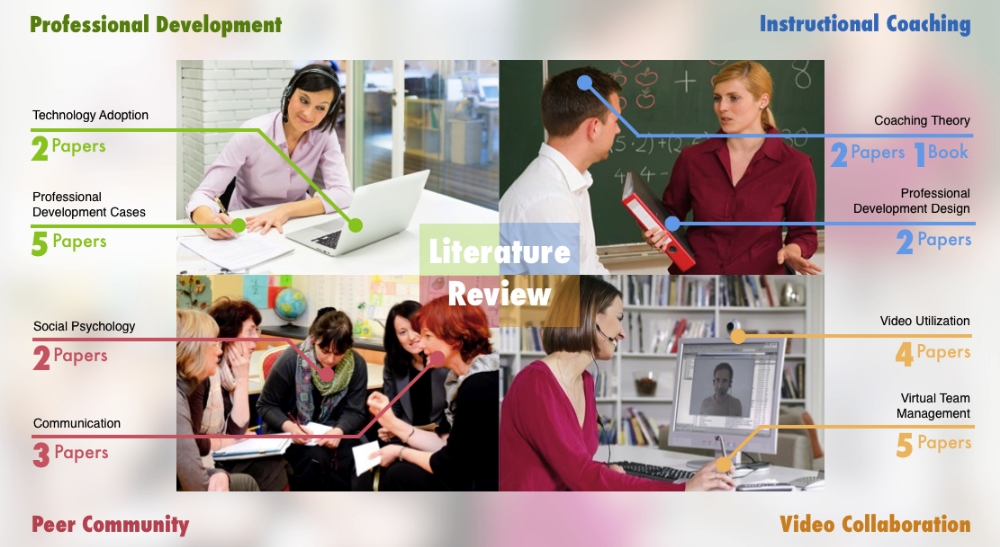


We interviewed teachers and coaches from a variety of departments - maths, language, science, social studies, and special education. The experience level of the teachers ranges from 2 years to 33 years. Our coach participants were from both onsite coaches at school and specialists from independent instructional coaching organizations.
Key Findings:
During the interviews, both teachers and coaches mentioned other stakeholders that would influence their collaboration (either in a good or a bad way). Hence, we also interviewed other school staff, from librarian to technology specialist at school. To remove obstacles and motivate teacher-coach interaction, we need to consider (though not focus on) more factors in the whole school district.
*Due to a non-disclosure agreement with our client, details of the models are hidden.
After affinity diagramming, we synthesized repeatedly emerging issues into 5 themes, did literature review on each of them, and generate 5 key insights (design implications) to solve these problems.
Emerging themes synthesized from user stories.
We brainstormed together and generated a bunch of design ideas based on those implications. To pick out the idea that would make most sense to teachers to implement, we made storyboards and conducted a "baseball card test" among teachers. I did the drawing for 4 of the storyboards.
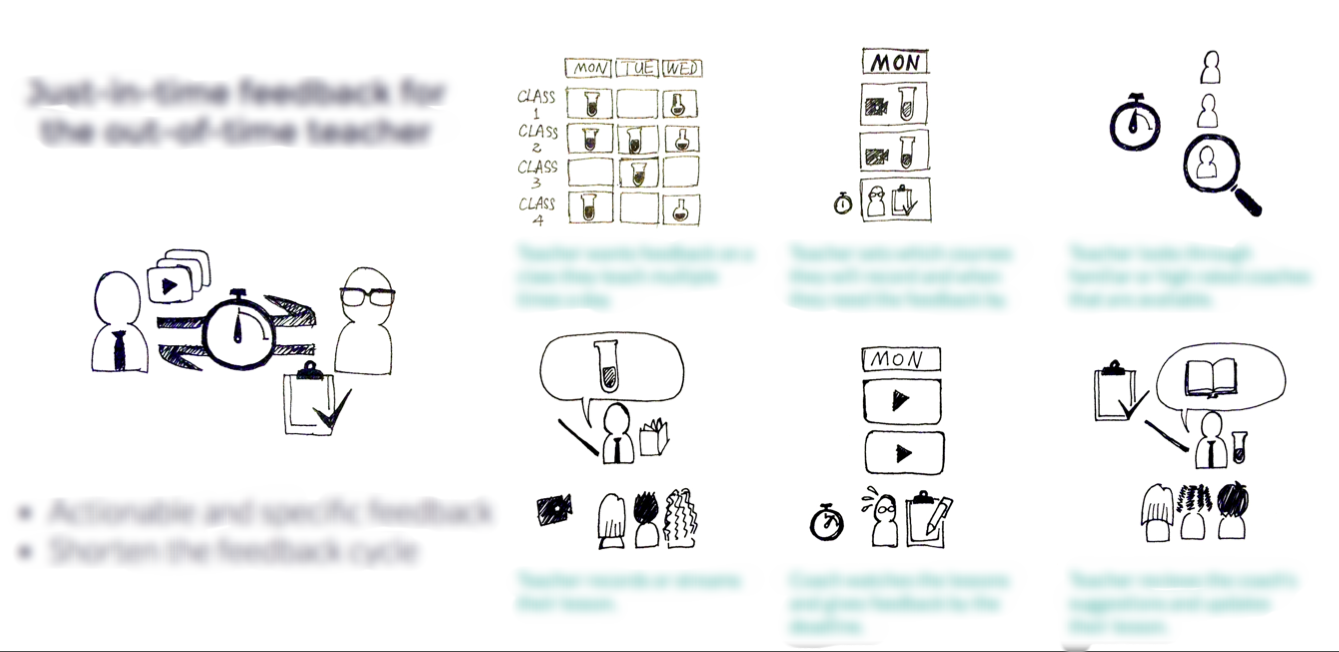
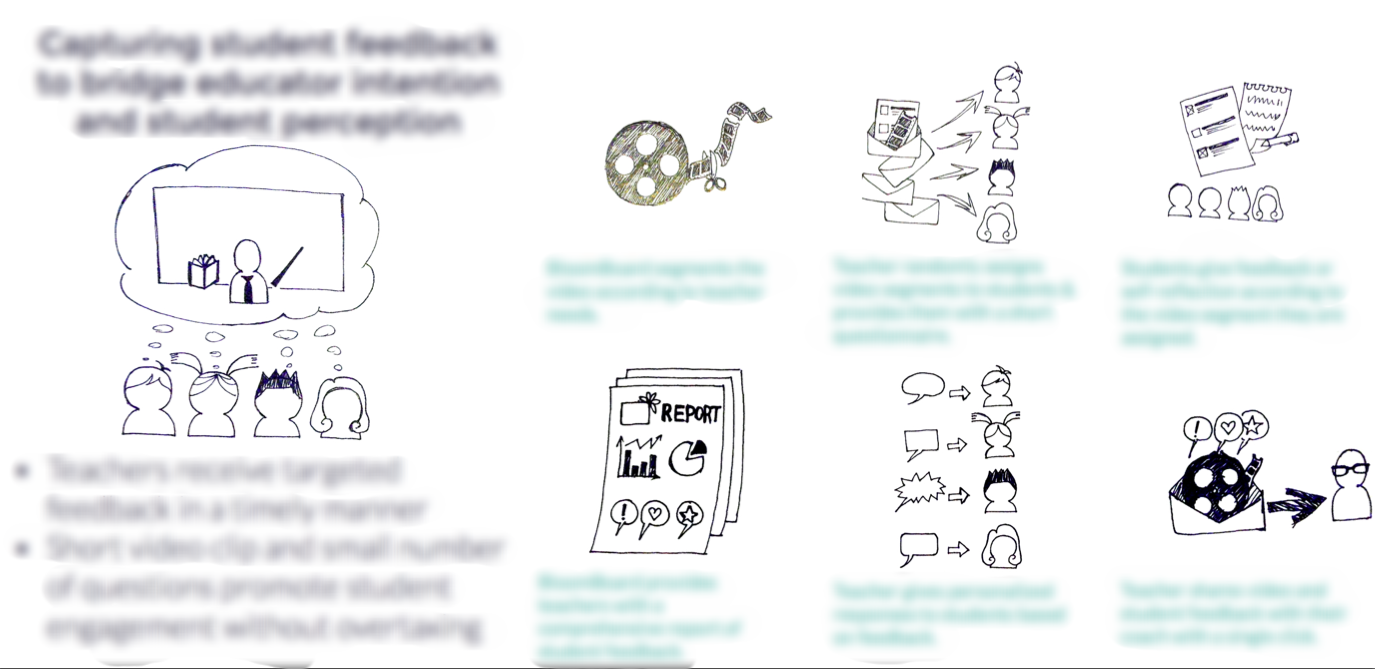
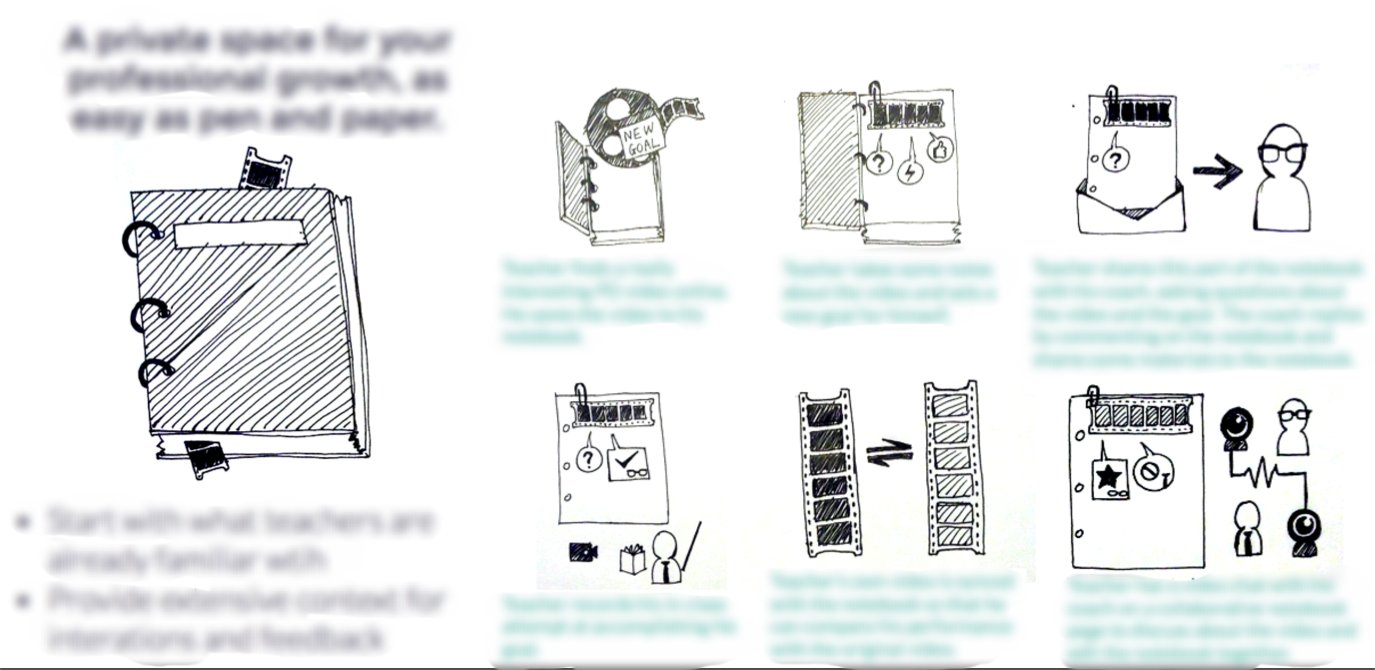
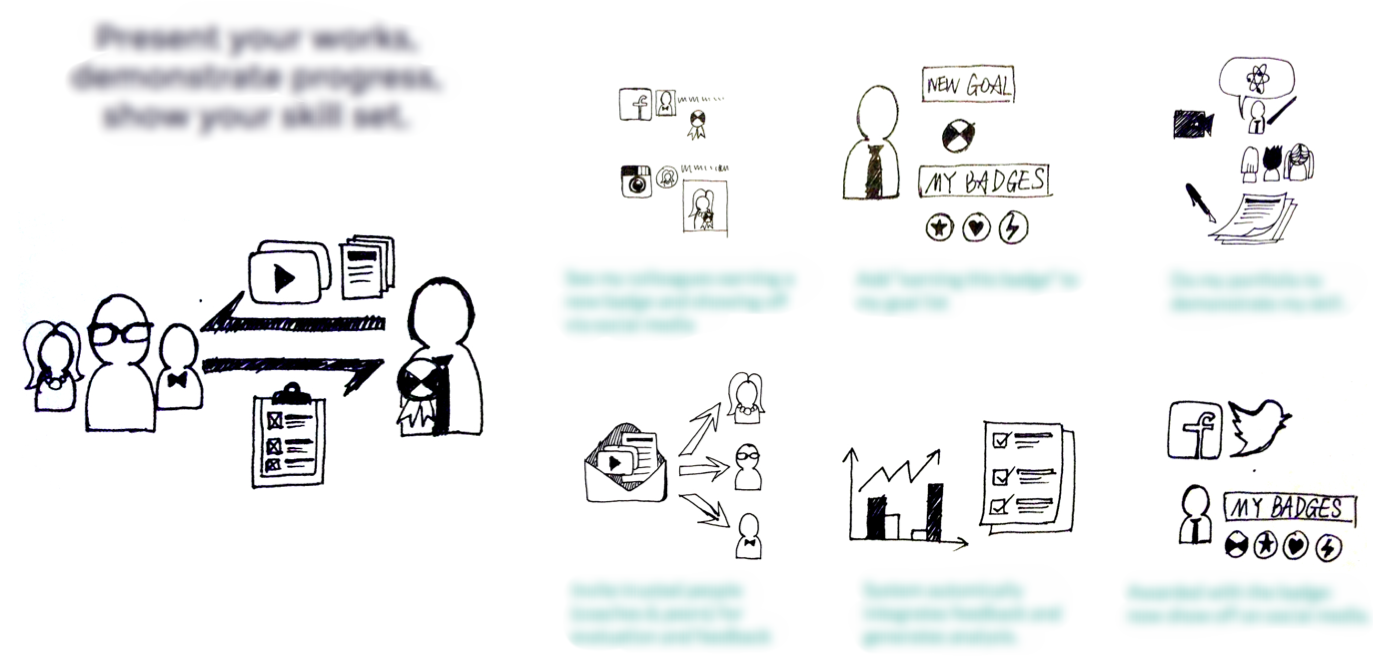

Generative Research
Based on teachers' feedback on all the five candidate design ideas, we held a design workshop with BloomBoard to select the best solution. We decided to implement the chosen design idea into a mobile app. For better discussion of users' behavioral patterns with our designer, I attempted to figure out the factors that might influence user experience by grouping teachers with similar opinions and user habits. After comparing teachers from different age groups, subjects, grades and with a variety of teaching experience levels, I felt inspired and excited to see how their attitude and behavior differentiated. Based on the synthesis of users' feedback, I made 3 personas to represent the user habits of various sorts of teachers.
Synthesize overlapping opinions of teachers to make personas.
As we moved on to iterative design and prototyping, user testing (both on-site and remote) went hand in hand with the design & implementation procedure. We had five prototypes before we reached our final solution. Referring to the personas, our team discussed together about how to adjust existing features to address diverse needs - balancing those that conflicted while prioritizing those shared by most teachers. As the fidelity of our prototype increased, we kept adding evidence-based features to our design. The tests was not only for figuring out usability issues or playing with information architecture, but also for investigating users' understanding of the product - that is to say, whether the core function of our design was perceived by users, and whether the core function address the problem we had been working on.
This project ended on Aug 5, 2015 with a successful presentation, during which we introduced our final design of the App to BloomBoard. I learnt and experienced a lot from collaborating with people with different backgrounds - one's understanding of a thing could be multiplied by seeing it from diverse perspectives. Yet the hand-on project convinced me that my role in a UX team should be a researcher: I am more than proud to work shoulder to shoulder with problem solvers, supporting them by discovering "the problems to solve".










